If there’s any piece of technology that has made a significant impact on the lives of everyone, it’s the cellular phone — specifically, the smartphone. It’s literally a tiny computer that fits into your pocket, and brings a plethora of information, entertainment, and lets you capture visual memories or be productive wherever you go. Pretty much everyone has a smartphone these days, for better or for worse.
But have you ever thought about which smartphones have been the most important and influential ones that shaped the rest of the industry? Let’s take a look at what we consider to be the most important smartphones of all time.
iPhone (2007)

There’s no doubt about it — the original iPhone changed the world of smartphones — and cell phones in general — forever. As Steve Jobs put it, “every once in a while, a revolutionary product comes along that changes everything.” And he was right.
When Jobs announced the first iPhone, he introduced it as three new products: a widescreen iPod with touch controls, a revolutionary mobile phone, and a breakthrough internet communications device. He repeated this list of three products three times for emphasis, before revealing that it was a single product that contained all three of these features.
The iPhone was the first smartphone of its kind. It got rid of the clunky physical keyboards that were on phones and smartphones prior to its release, instead replacing it with a touch screen keyboard that was a joy to use and much more responsive than any touch screen that came before it. Plus, we didn’t even need a stylus! And the multitouch support meant we could interact with the touch screen in intuitive new ways that we didn’t think were possible at the time.
We also had mobile Safari, which brought a desktop-class web browser to a device that fit in our palms, which provided a much better web browsing experience than the wireless application protocol (WAP) browsers from before. Though there were only Apple’s native apps at the time, users could install web apps by adding webpages to the home screen.
Though the original iPhone wasn’t perfect — it lacked copy and paste and couldn’t even support MMS — it changed the world of smartphones from that point forward. Even the competition from Android and Microsoft drew influences from the original iPhone.
HTC Dream/T-Mobile G1 (2008)

The HTC Dream, also known as the T-Mobile G1, is one of the most important phones of all time because, well, it was the very first Android phone — finally giving the iPhone a worthy competitor.
With the G1, the phone began as soon as Google announced the Open Handset Alliance and the Android platform in November 2007. In less than a year, in a partnership with T-Mobile and HTC (who was best known for manufacturing Windows Mobile devices at the time), the G1 came to fruition. However, the G1 was not the first Android phone design — originally, the first Android smartphone was going to be a BlackBerry-like device, but after Apple revealed the iPhone, those plans were scrapped in favor of the G1 design.
While the G1 had a slightly smaller screen than the iPhone, it did slide open to reveal a full physical QWERTY keyboard underneath, similar to a Sidekick. And instead of just a single button like the iPhone, there were six shortcut buttons on the chin of the device, making it easy to access certain features quickly.
But the real reason why the T-Mobile G1 is important is that it was the first device to run Android. Though the first version of Android was basically seen as a way for Google to develop its own highly integrated applications for mobile — like Google Maps, Street View, and Gmail — it grew to become a colossal platform of its own right, and now dominates most of the smartphone market with devices from various manufacturers like Samsung, OnePlus, and more.
Palm Pre (2009)
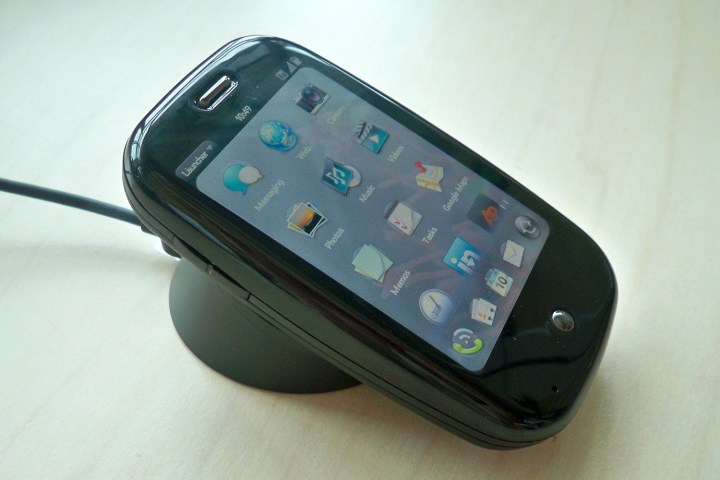
The Palm Pre was a late success from Palm, but it definitely had an impact on the smartphone industry despite having a short life span.
Palm’s webOS is the main factor behind the Pre’s influence on the smartphone industry — it was one of the first devices, besides the iPhone, to launch with a multitouch interface. With webOS, the interface was heavily gesture-based, which both iOS and Android drew inspiration from. For example, one of the key features of webOS was how one would close applications by using a finger to flick them off of the screen, closing the application from running in the background. The bottom of the screen was a dedicated gesture area, where you could do certain actions directly from the home screen, such as getting to the application launcher. Most Android phones and iPhones are gesture-based nowadays, and the Palm Pre was a huge influence in that regard.
The Palm Pre hardware itself was also quite groundbreaking. It had a slide-out keyboard in portrait orientation, and it was a pleasure to type with. This was also one of the first phones to have wireless charging, which is a staple with most flagship and mid-range smartphones today.
And there was the Synergy groundwork that Palm Pre laid out, which we can see in both Android and iOS now. Synergy was what Palm used to merge your data from all of your services, like email, instant messaging, and address book information — Synergy handled all of that for you. It was also used for artificial intelligence, as it would detect things like how often you snoozed your alarms or even send a message to people you’re meeting up with that you’re going to be late. There was a lot of potential here, but unfortunately, it was all cut short.
iPhone 4 (2010)
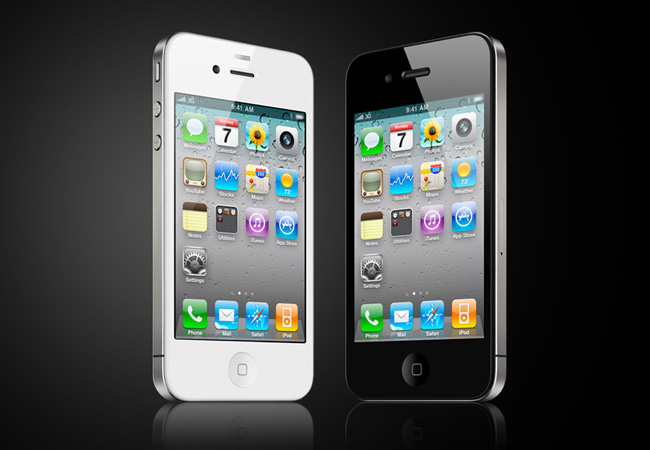
The iPhone 4 was the first major redesign for the iPhone, doing away with the curvy edges and corners and going with a flat, boxy design that has resurfaced in recent years since the iPhone 12 series — and is still seen today with the iPhone 14 and iPhone 14 Pro. There are plenty of people who would even say that the iPhone 4’s design was one of the best iPhone designs ever, with the stainless steel frame and glass back. Despite the antenna-gate controversy, the iPhone 4 really had a timeless and classic design that looks good even to this day.
But that wasn’t all the iPhone 4 brought to the table. This was the first iPhone with a high-resolution Retina display with 326 pixels per inch (ppi), which is double that of the original iPhone. You could no longer see individual pixels on the screen, and that was a huge deal at the time. This set the stage for every iPhone that came after it and also upped the ante for the competition.
And let’s not forget the iPhone 4’s huge camera upgrade, going from 2MP to a whopping 5MP with LED flash. Don’t forget that it was the first iPhone with a selfie camera too, though it was a mere 0.3MP sensor. With the 5MP camera, the iPhone 4 became the device to use for mobile photography, and pretty much set a precedent for the iPhone being a great camera. And with the selfie camera, it also brought about FaceTime, allowing iPhone users to connect through video calls. Today, FaceTime remains one of the biggest hooks for the entire Apple ecosystem.
BlackBerry Bold 9900 (2011)

The BlackBerry Bold 9900 was the pinnacle of BlackBerry at the time, featuring both a trackpad and a touchscreen together. The design for it mostly came from the BlackBerry Bold 9000 before it, which was already a success from the well-designed and well-spaced QWERTY keyboard that many consider the best that BlackBerry had made during this time.
But the BlackBerry Bold 9900 was also one of the thinnest BlackBerry devices, as it was just 10.5mm thick. It also had a luxurious exterior that featured brushed stainless steel for the frame and a glossy, glass fiber backplate. Because this is the first BlackBerry that used a metal finish, it felt more like a premium and higher-quality product than other BlackBerry devices before it. In a world with the iPhone, this was needed to survive.
Because the BlackBerry Bold 9900 was in the time of the iPhone and Android phones, BlackBerry focused more on performance with the Bold 9900. This came in the form of the Liquid Graphics touch screen with BlackBerry 7 OS, which delivered “fast and smooth performance with highly responsive touch-based navigation, web browsing, pictures, video, and graphic intensive games,” according to BlackBerry. Unfortunately, the BlackBerry Bold 9900 did suffer some software issues, like not turning on at all, thus forcing BlackBerry to replace those defective devices.
Still, it was hard to deny that the BlackBerry Bold was one of the more important devices in BlackBerry’s history and the overall smartphone market.
Samsung Galaxy Note (2011)
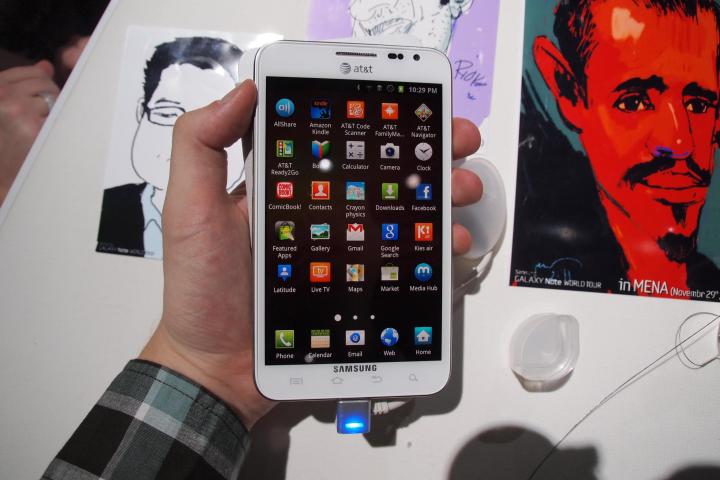
If there’s any smartphone that set the precedent for years to come, it’s the original Samsung Galaxy Note. At the time, this was a distinctive phone because of its unusually large size, which helped to coin the term “phablet,” which is what a lot of smartphones are in 2023. With a 5.3-inch display, the Galaxy Note felt more like a tablet than a smartphone, as most smartphones during this time were much smaller. Although 5.3 inches sounds tiny by today’s standards, it made the Galaxy Note an absolute behemoth in 2011.
Another “phablet” aspect of the Galaxy Note was the fact that this introduced the S Pen stylus, which is still currently being used with modern Samsung phones like the Galaxy S23 Ultra. With the S Pen, users could use it to navigate through the Galaxy Note interface or use it in appropriate apps for note-taking and drawing.
Ever since the introduction of the Galaxy Note, smartphones have just gotten bigger and bigger. Though a 5.3-inch display nowadays seems small compared to the almost 7-inch displays that are commonplace, the original Galaxy Note size was the one that started the trend of big phones.
HTC One (2013)
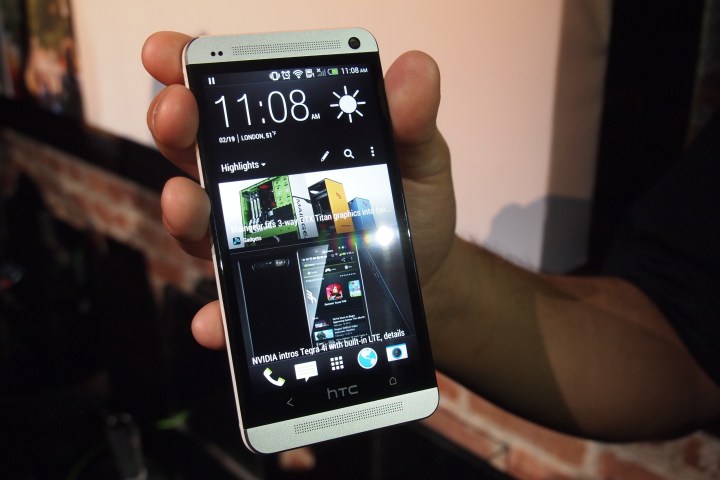
The HTC One was definitely a first of its kind. At the time, it was the first Android phone with an aluminum unibody design, setting a new standard for what a premium and flagship smartphone should look and feel like.
Not only did it have a fantastic design, but it also had one of the best screens at the time, as well as high-quality, front-facing stereo speakers. These striking speakers also took advantage of HTC’s recent Beats acquisition to highlight audio fidelity with BoomSound.
The HTC One was also using the brand new Snapdragon 600 processor, combined with licensed Apple touchscreen tech. This gave the HTC One an edge in performance over other Android phones. And HTC was doing unique and interesting computational photography way before Google and its own Pixel lineup of phones, or even through Google Photos.
While it only had a 4MP camera, the Ultrapixel tech had low-light fidelity for unmatched photo quality in 2013. And with HTC Zoe, you could shoot multiple frames before and after the main photo in a capture, so you can actually scroll back and restore those missed moments. There was also HTC Gallery, which would send you video highlights – a feature that both Google Photos and Photos on iOS would adopt later on.
The HTC One could easily be described as ahead of its time.
Nokia Lumia 1020 (2013)

The Nokia Lumia 1020 is an important piece of history in the smartphone space. It was a Nokia phone with Windows Mobile, which no longer exists today. But at the time, it was a unique standout among the very saturated crowd of Android smartphones and iPhones.
But more so than the software, the real highlight of the Nokia Lumia 1020 was its camera. You had a mighty impressive 41MP camera with optical image stabilization on the Nokia Lumia 1020, which was extremely rare back in 2013. It also used a Carl Zeiss lens, making it one of the most advanced camera phones at the time. Combined with Nokia’s PureView technology, which is a pixel oversampling technique that achieves higher definition and light sensitivity and enables digital lossless zoom. As you can tell, the Nokia Lumia 1020 was another one of those smartphones that was far ahead of anything else of its generation.
But despite all of this, the pairing of Nokia and Microsoft just didn’t seem to work out in the end. Microsoft stopped making Windows Mobile, allowing Android and iOS to dominate the smartphone market. Still, the Lumia 1020 was a big deal back then — and its impact on the entire smartphone space is still felt today.
Google Nexus 5 (2013)
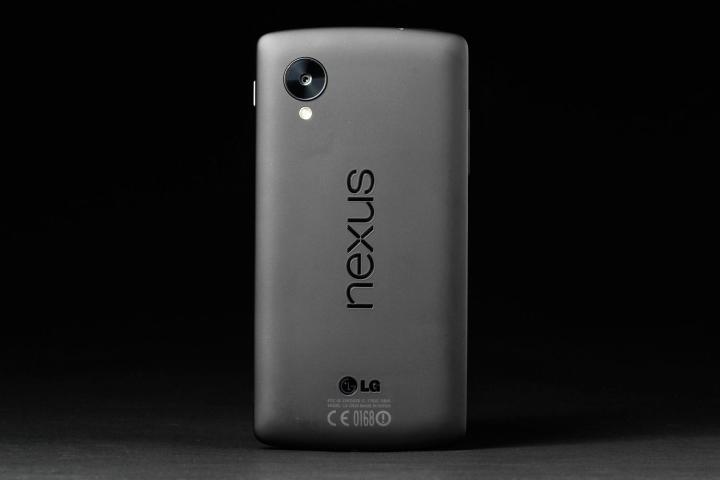
The Google Nexus 5 was a device manufactured as a partnership between Google and LG Electronics. It was the fifth Nexus phone and was the launch device for Android 4.4 “KitKat.” The Nexus 5 showed that mid-range phones had the potential to be great, even compared to top-of-the-line flagship devices. It had a good balance of performance and cost, and for a mid-range device, the display was high quality. There were also some quality-of-life improvements overall thanks to the new software.
The Nexus 5 was also important because it showed that Google could make great phones with the right partnerships. Of course, Google is now making its own hardware and processors with the Pixel lineup, but still, the Nexus 5 was a fantastic device, especially among the geeky. It was comfortable, powerful, and affordable — a rare combination that few other phones had managed to achieve as well as the Nexus 5 did.
Moto G (2013)

The first Moto G was initially made for emerging markets but was also released in developed markets (like the U.S.) as a viable, low-price option. And it was one of the first budget phones that, well, didn’t totally suck … which was pretty common at the time. And the Moto G, after just six months on the market, became Motorola’s best-selling smartphone ever, while also being the top-selling phone in Mexico and Brazil.
There are a few good reasons for the success of the Moto G. Again, despite being a budget phone, Motorola managed to achieve a lot for under $200. The Moto G had a crisp display that was gorgeous to look at despite being 720p resolution on a 4.5-inch LCD panel, came with a near-stock version of Android, and had impressive performance for the price tag. Even though it was an LCD display, the colors on it were bright and rich — it was so good that one could be fooled into thinking it was an OLED or AMOLED screen.
Of course, there were some areas where you could tell that sacrifices were made to keep the Moto G affordable, such as the 5MP camera and 1.3MP selfie camera. But overall, the Moto G was very impressive for what it’s worth. It showed that not every budget phone had to be a piece of junk, and that you could get incredible bang for your buck. Budget phones have come a long way over the years, and they all have the Moto G to thank for their progress.
OnePlus One (2014)
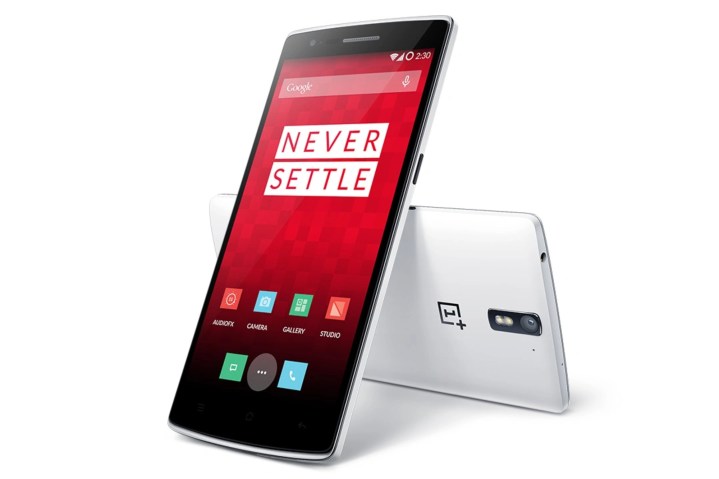
The OnePlus One was the first product from OnePlus, and it’s another one of those phones that redefined what a budget or mid-range phone should be, despite being from a brand new company.
With the OnePlus One, you got features that you’d normally see on higher-end Android phones, such as a 5.5-inch 1080p display, a 2.5GHz quad-core processor, 3GB RAM , 64GB storage, a 13MP camera, and even a 5MP selfie camera. But all of this just cost $350, which was about half the price of other flagships at the time. Simply put, it was nothing short of impressive. The front of the phone was also super minimalistic, with no gimmicks or tacky branding and logos.
And despite being a mid-range phone from a brand new company, once you started it up, it was pretty much a stock Android experience with barely any bloatware. It did come with some tweaks from CyanogenMod, but this didn’t get in the way of the “stock” Android feel, while also adding some much-welcome customization features. The OnePlus One was also very developer friendly and received support for a wide variety of ROMs and custom kernels from the community as a whole. Though it’s significantly different compared to the latest OnePlus 11 we have today, the OnePlus One pushed companies to be more competitive with their specs and prices, and the entire mobile industry is better off because of it.
LG G6 (2017)
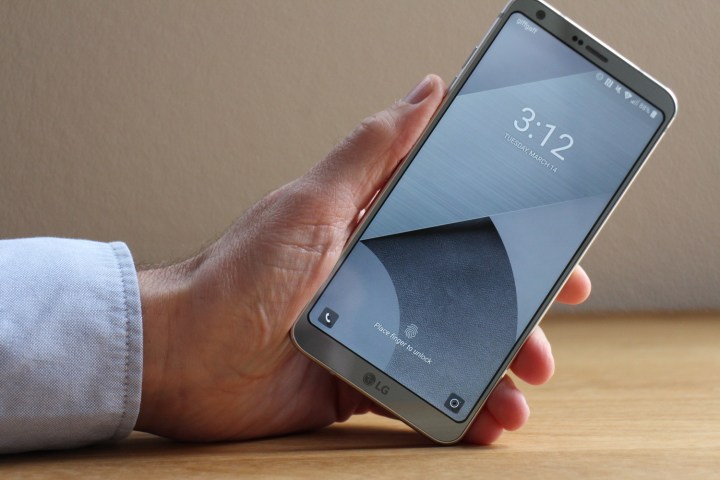
Though the LG G6 wasn’t an amazing phone, it’s important because of the design. This was the first smartphone to have one of the biggest reductions in bezels that we’ve ever seen on a mainstream handset, which at the time, was a big deal. LG also got the G6 out before the Samsung Galaxy S8, so it barely beat Samsung to the punch.
With the LG G6, we had a unique 5.7-inch display that also had a 2:1 aspect ratio (marketed as 18:9), which was taller than the standard 16:9 that most smartphones were previously using The LG G6 shipped with Android 7.0 “Nougat” and also came with LG UX. A few of LG’s own in-house applications had enhanced landscape modes that took advantage of the 18:9 aspect ratio that the device offered, and the screen size was perfect for split-screen mode with multiple apps.
Although the overall package of the LG G6 wasn’t the most memorable, it paved the way forward for the look and feel of modern smartphones today.
iPhone X (2017)
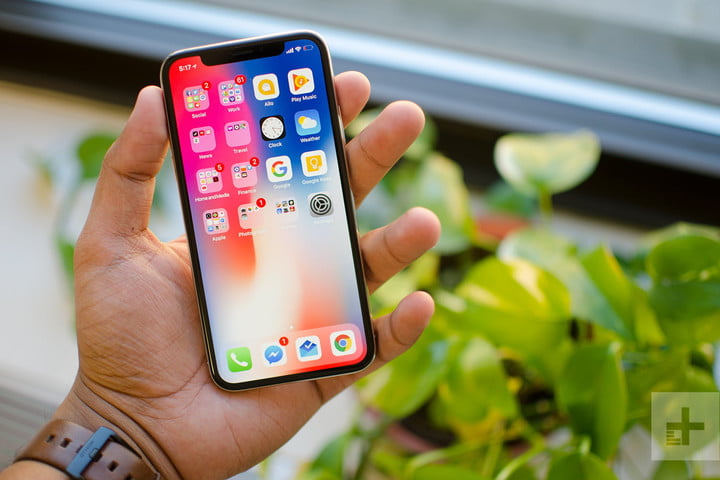
This marks the third iPhone on this list, but for good reason. The iPhone X is one of the biggest shifts in the classic iPhone design for the past 10 years, as Apple eliminated the Home button and replaced Touch ID with Face ID. This change has set the precedent for all iPhones going forward, including the current iPhone 14 and iPhone 14 Pro lineups, and presumably the upcoming iPhone 15.
And by eliminating the Home button, Apple marked a move over to iOS versions that are more gesture-based than before, as there was no longer a physical button. Instead of using the Home button to return to the home screen, you’d swipe up from the bottom of the screen, or do a longer swipe to bring up the app switcher.
The iPhone X also inspired Android phones to begin eliminating buttons and move towards a more gesture-based interface of their own. And with the notch introduced by the iPhone X, Android phones tried to one-up Apple with more creative ways of housing front-facing cameras and face recognition sensors.
Huawei Mate X (2019)

Though many will remember that the original Samsung Galaxy Fold launched in 2019 as the first mainstream foldable smartphone, it was marred with durability concerns and other hardware issues. Huawei unveiled the Mate X in February of that same year and was originally going to launch in June. But in light of the controversy with the Galaxy Fold, the Mate X launch was pushed back to November in China only, with a release to global markets in March 2020. Huawei learned from the mistakes of the Galaxy Fold and ended up with a better foldable smartphone than Samsung.
The Huawei Mate X featured a more durable display with an improved hinge function, as well as a redesigned cooling system. It was also powered by the Kirin 990 5G chipset and shipped with Android 10 and EMUI 10. It did not suffer from the durability issues that Samsung had with the Galaxy Fold, making it the superior foldable at the time. It was also more futuristic by having 5G capabilities, a 40MP main camera with 16MP wide-angle lens, and an 8MP telephoto.
So, while Samsung had the first foldable with the Galaxy Fold, Huawei did it better with a more durable design that helped to shape later foldables.
Huawei P30 Pro (2019)

We have another Huawei on the list, and this time it’s the P30 Pro. The Huawei P30 Pro is a distinctive, standout phone that would certainly turn heads and also set the trend for future smartphones.
The P30 Pro was one of the first smartphones to introduce periscope camera technology, allowing for improved optical zoom with telescopic lenses. Since then, most high-end flagship devices have added their own periscope lenses for better optical zoom ranges, such as the Samsung Galaxy S23 Ultra, and the iPhone 15 Pro Max is rumored to be getting periscope cameras this year. The P30 Pro also refined Huawei’s prowess at AI scene recognition, first introduced in the P20 Pro.
On top of that, the hardware itself was simply beautiful and stunning. Huawei also made the P30 Pro in some amazing colors, like a glowing orange/red hue called “amber sunrise,” or “breathing crystal,” which featured blue-to-silver, with subtle hints of pink and green — think of an oyster shell gradient. Truly unique colors that you’d want to show off with no case, or at least a transparent case if you must. Huawei knows how to do interesting colors, and honestly, a lot of other smartphone makers, especially Apple, need to take some notes.




